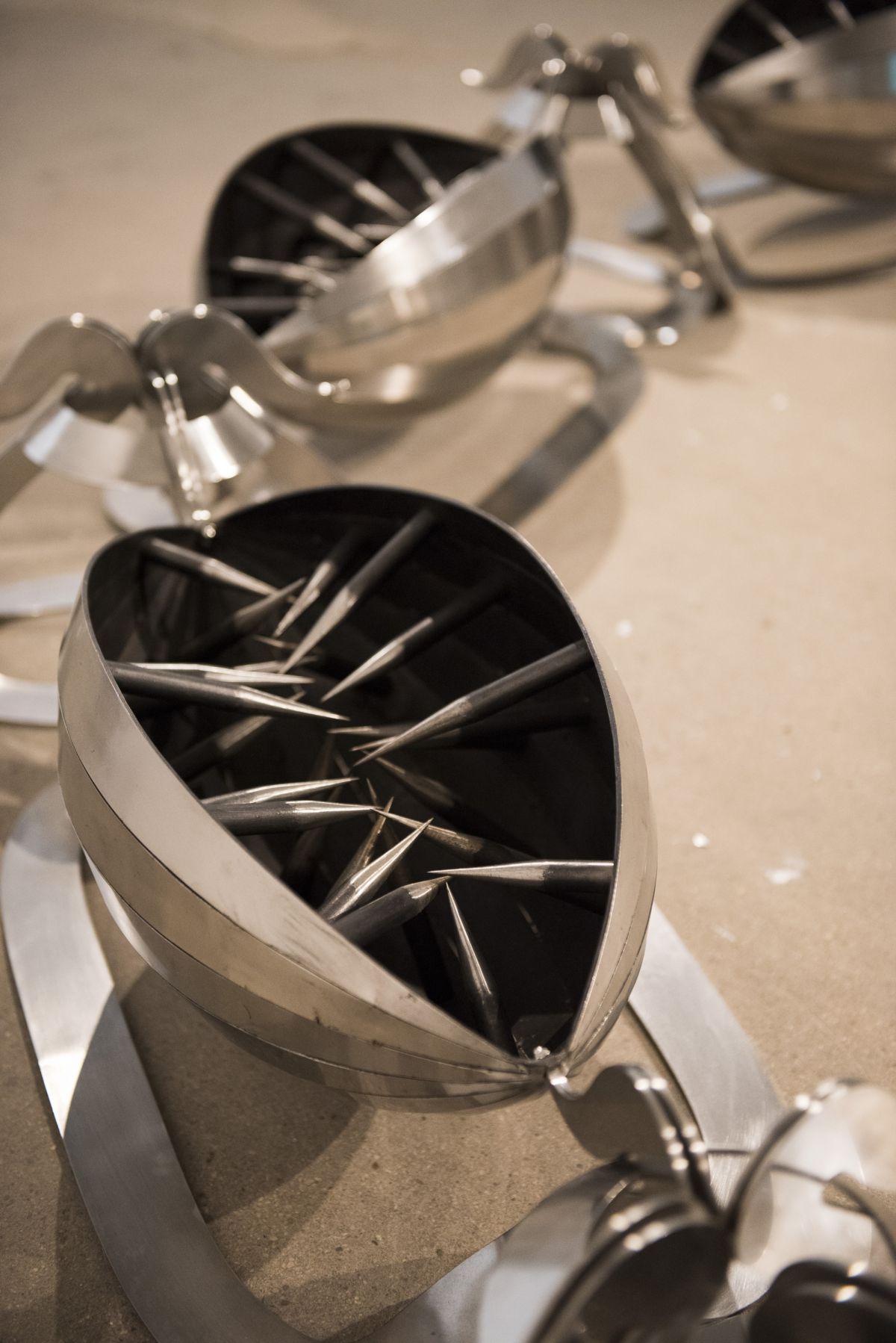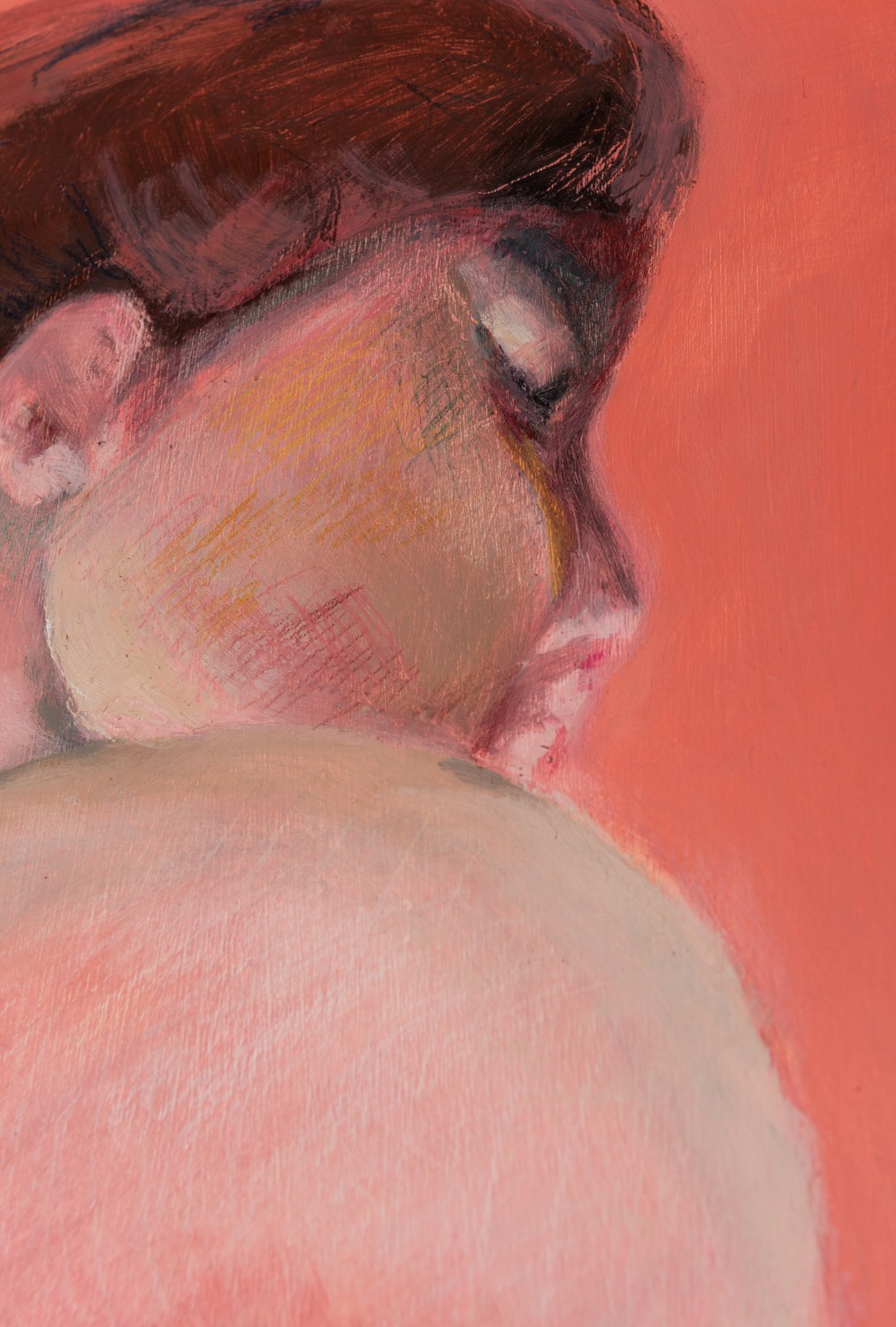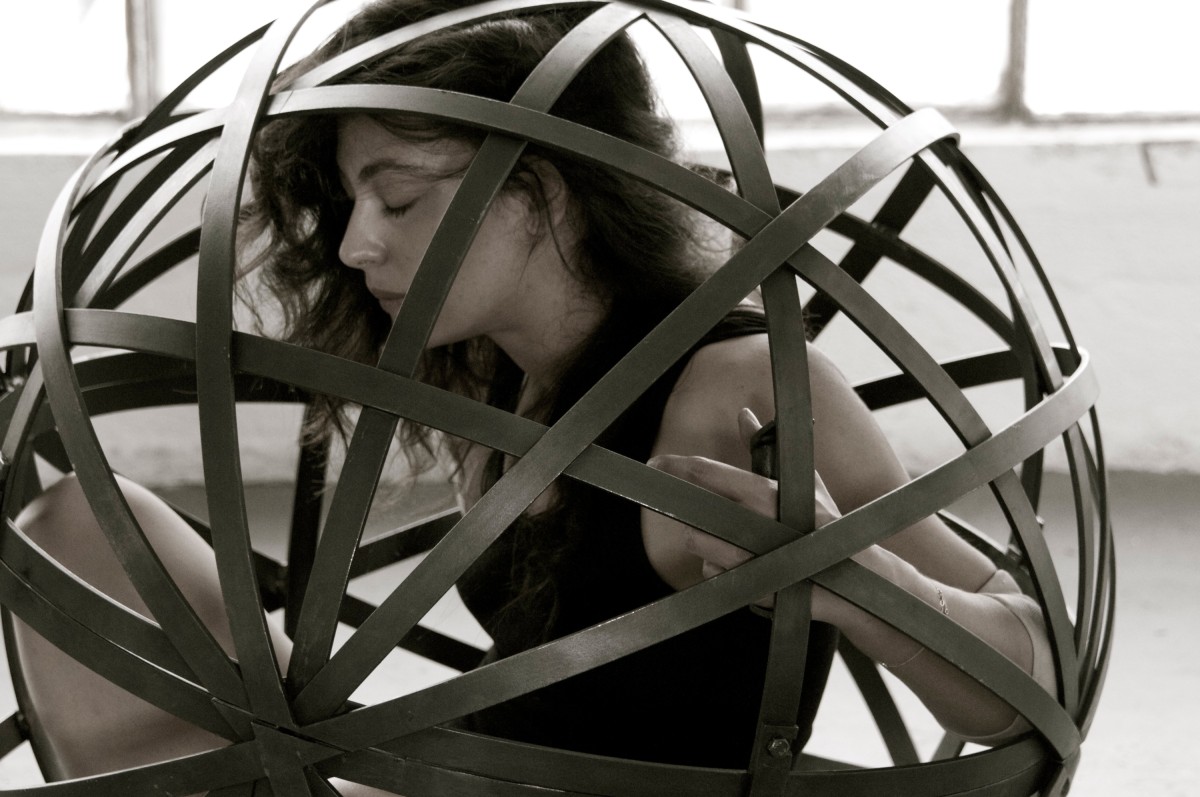Kalliopi Lemos | Ornaments for Venus

The importance of love, or all things good that come in threes. On the work of Kalliopi Lemos
by Lucette ter Borg
‘Ik spreek met je zonder één /
woord te zeggen’
One of the most wonderful poets I know is the originally Afghan (Persian) mystic Maulana Jalaluddin Rumi. Rumi lived in the thirteenth century and left his home country for Turkey, where he remained until his death. In Turkey he met a man with whom he – in all probability – had a romantic relationship that was perfect in many ways. But it seems unlikely that this relationship was ever publicly acknowledged. In those times, in that country.
‘Ik praat met je zonder dat één /
oor ons hoort’
Rumi wrote poems about love – not the kind of love we know from films, love as an asset to be checked off, or to be cynical about as in song lyrics. He wrote poems about love as a mirror in which the divine could be encountered. In them he compared love to a welcoming home, where love exists not only for others but also for oneself. There, in that home, all emotions – not only joy and happiness, but also gloominess and despair – are granted a seat at the breakfast table. On waking every morning, writes Rumi, we can greet our feelings affectionately and treat them as we would treat a guest: with respect.
One of the most wonderful nonfiction writers I know also writes about love. I've just turned the last page of All About Love by bell hooks. It dates from 2000 but is, like the poems of Rumi, still very relevant to our times. In fourteen chapters that read like an alternative version of the Ten Commandments, the American feminist, author and activist asks herself why 'lovelessness' permeates our culture to such a degree. Why do we celebrate profit-seeking, (staying together on the basis of calculated motives?)? Why do we consider it normal to cling to a victimhood of hurt and trauma? The book by hooks (a pseudonym, by the way, of Gloria Jean Watkins) metaphorically opens windows, just as Rumi's verses do. All About Love is not a self-help book but an ode to love, which bestows mercy, creates clarity (and finds words for this), is just and sincere.
Both Rumi and hooks allow their words to shine softly. It's as if they radiate a certain warmth, these two very modest stoves of paper and ink.
Many good things come in threes (often bad things too, sadly enough). A third little radiant heater, for me, is the work of London-based artist Kalliope Lemos (1951), born on the Greek island Chios.
I've only been acquainted with the work of Lemos since 2021, when a six-and-a-half meter tall sculpture of hers – made of braided brown and black 'hairs' of steel – was installed along the water on Rotterdam's Westersingel. The work suggests a cut-off braid which proudly juts up skyward as a symbol of female liberation. Although the steel is icy cold in the winter, it nonetheless seems to glow softly. That is partly due to the elegant curves made by the braided hair and the amazing force of this gesture. 'The Plait', as the sculpture is called, warms our hearts.
The work is part of a large group of sculptures, often shown in public spaces, which Lemos produced between 2016 and 2023. That group is titled Tools of Endearment. Such a 'tool' can be a corset of steel, an enormous stiletto heel which has been replaced by a knife, or a chain to be worn around the neck.
That chain – called 'Necklace' (2016) – is now lying on the gallery floor at Roof-A in Rotterdam. Made of stainless steel, it shines and beckons us, but it also has a deterrent effect. The chain is extremely heavy, its links resemble bear traps and any woman wearing it would certainly be wounded by the sharp edges of this jewelry. In her Tools of Endearment Lemos touches a sore spot. The sculptures, she writes to me, express the idea that women in our society “are creative creatures, complex and contradictory.” This contradiction is also inherent in the sculptures of Lemos: the tools for showing endearment are razor-sharp. But are they indeed effective? Endearment and love do not depend on the height of our heels or the size of our bra. And the goddess Venus, Lemos says, certainly never showed an interest in such things.
The work of Lemos is highly diverse: it includes not only sculpture, but also oil paintings, works on paper and wood, videos and beautifully painted and embroidered textile works that look like chasubles. This work – frequently produced in series as well – seems to contradict the three-dimensional works. They have a gentle, feminine appearance and the irony is gone. It looks as though the hand of the artist has caressed the paper as if it were the skin of a lover. The paint seems to have been exhaled across the image support.
Two fairylike oil paintings exemplify this. Once upon a time (by the water) (2024) and Once upon a time (in the woods) (2024) show three nude women. They touch each other, they are one as a trio; they are self-confident and serene. The three figures stand among the oak trees, sit on the grass and are surrounded by crocodiles and a snake. Lush wildlife surrounds the women, but while painted in pastel hues it nonetheless has a menacing quality. It isn't clear whether the crocodiles are having an afternoon nap, or if the snake is curious, whispering secrets to the women or descending from the oak tree to bite them.
The twenty-one-part series The Feminine and Nature (2023) also investigates the role of women in nature. This investigation is carried out layer by layer. Your eyes delve into the image. The parts of the series consist of individually painted portraits of women of varying ages and from different cultures. Each portrait is glued to a backing of thick board over which cotton cloth has been stretched. Situated around the portraits are flowers, leaves – some withered, some with lovely deep colors. The women are invariably together, occasionally with a child, and are literally 'supported' by something as feathery light as an aspen leaf.
About this, too, Lemos has an interesting remark in her letter: “The women in these works are intertwined with nature. That connection is the essence of life itself. With this series I wanted to concentrate on the powerful resonance that emanates from the nurturing, the intuitive, the cyclical aspect of both women and nature.”
A few months ago I reviewed, for the newspaper that I write for, the group show 'Kiss My Soul' at the Dordrechts Museum. Spoiler: the exhibition has just ended. Too bad for those who hadn't visited the museum, for what a collection of beautiful, warm works were brought together here by curator Wilma Sütö. The work by Lemos was among my favorites in the show. Her Necklace lay on the floor. Hanging in a somewhat more narrow corridor were vestiments, draped over poles like banners. These allowed visitors to see both sides of the linen that Lemos had painted with images. Her Ritual Garments (2020-2022) were so rich with depictions that it felt as if each one opened a new chapter of a book.
Inspiration for Ritual Garments came from the spiritual teachings of Sufism, which is intended as a means to achieve personal 'purification'. One of the main characteristics that Sufism aims to develop is contentment about all good and bad things that happen. Because everything comes from God. Lemos's painted depictions are reminiscent of images from the Greek Orthodox Church, but the decorative abstraction of Islam can also be discerned in them. There is a peacock, which lays eggs. Dragons are slayed; in a light-blue sea people are devoured by gigantic fish with orange-brown scales; there is an ark that looks like that of Noah; there are garlands and geometric adornments. And there are writings.
In the Dordrecht exhibition I suddenly saw the words of my favorite poet written out: an excerpt from a larger poem by the Sufi mystic Maulana Jalaluddin Rumi. Those words, which I described at the start of this story, are about a person being like a welcoming inn: hospitable to all thoughts, to all the emotions that we have, beautiful and ugly. In her work Lemos manages to express the love of all that comes, goes and will be. Unconditionally, and sometimes with a heel like a stiletto.
Translation: Beth O'Brien

